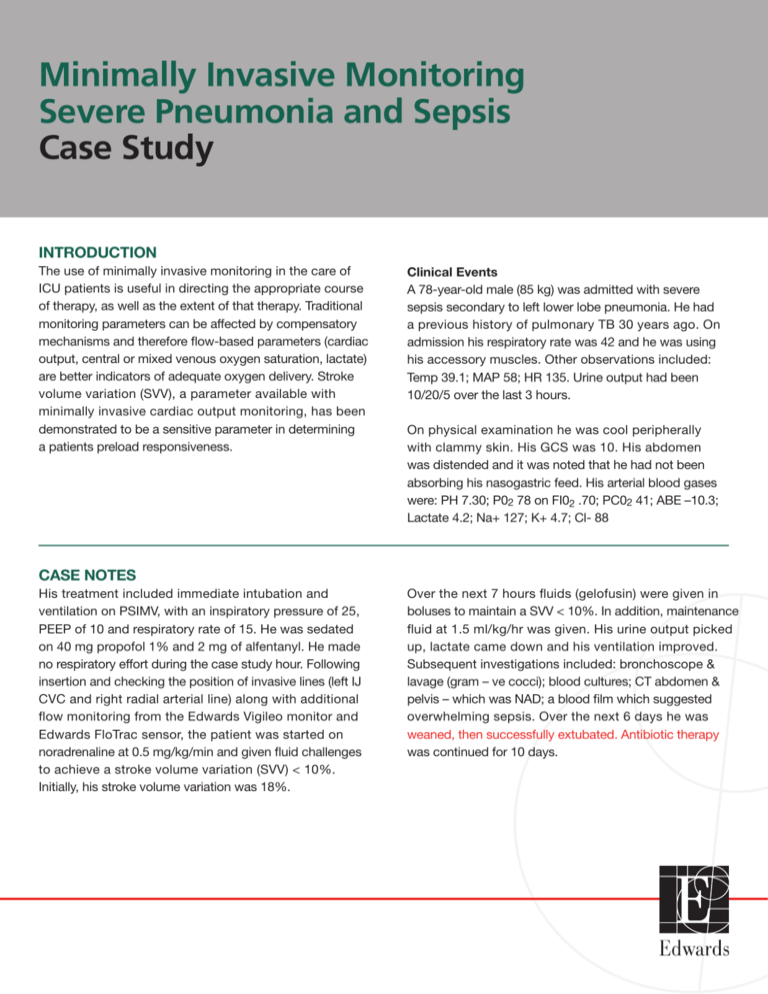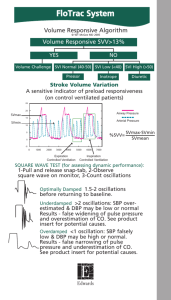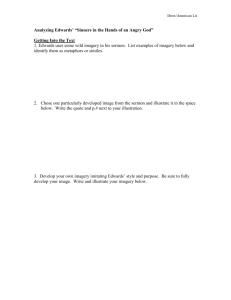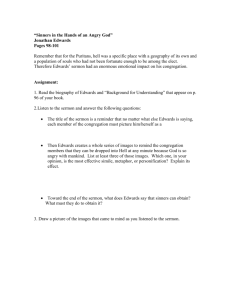
Minimally Invasive Monitoring
Severe Pneumonia and Sepsis
Case Study
INTRODUCTION
The use of minimally invasive monitoring in the care of
ICU patients is useful in directing the appropriate course
of therapy, as well as the extent of that therapy. Traditional
monitoring parameters can be affected by compensatory
mechanisms and therefore flow-based parameters (cardiac
output, central or mixed venous oxygen saturation, lactate)
are better indicators of adequate oxygen delivery. Stroke
volume variation (SVV), a parameter available with
minimally invasive cardiac output monitoring, has been
demonstrated to be a sensitive parameter in determining
a patients preload responsiveness.
Clinical Events
A 78-year-old male (85 kg) was admitted with severe
sepsis secondary to left lower lobe pneumonia. He had
a previous history of pulmonary TB 30 years ago. On
admission his respiratory rate was 42 and he was using
his accessory muscles. Other observations included:
Temp 39.1; MAP 58; HR 135. Urine output had been
10/20/5 over the last 3 hours.
On physical examination he was cool peripherally
with clammy skin. His GCS was 10. His abdomen
was distended and it was noted that he had not been
absorbing his nasogastric feed. His arterial blood gases
were: PH 7.30; P02 78 on FI02 .70; PC02 41; ABE –10.3;
Lactate 4.2; Na+ 127; K+ 4.7; Cl- 88
CASE NOTES
His treatment included immediate intubation and
ventilation on PSIMV, with an inspiratory pressure of 25,
PEEP of 10 and respiratory rate of 15. He was sedated
on 40 mg propofol 1% and 2 mg of alfentanyl. He made
no respiratory effort during the case study hour. Following
insertion and checking the position of invasive lines (left IJ
CVC and right radial arterial line) along with additional
flow monitoring from the Edwards Vigileo monitor and
Edwards FloTrac sensor, the patient was started on
noradrenaline at 0.5 mg/kg/min and given fluid challenges
to achieve a stroke volume variation (SVV) < 10%.
Initially, his stroke volume variation was 18%.
Over the next 7 hours fluids (gelofusin) were given in
boluses to maintain a SVV < 10%. In addition, maintenance
fluid at 1.5 ml/kg/hr was given. His urine output picked
up, lactate came down and his ventilation improved.
Subsequent investigations included: bronchoscope &
lavage (gram – ve cocci); blood cultures; CT abdomen &
pelvis – which was NAD; a blood film which suggested
overwhelming sepsis. Over the next 6 days he was
weaned, then successfully extubated. Antibiotic therapy
was continued for 10 days.
SVV in Response to Fluid Challenges
Over First Hour of Care
SVV %
250 ml gelofusin
20
18
250 ml gelofusin
16
250 ml gelofusin
14
12
250 ml gelofusin
10
8
6
250 ml gelofusin
250 ml gelofusin
4
2
0
1
3
5
7
9
11
13 15 17 19 21 23 25 27 29 31 33 35 37 39 41 43 45 47 49 51 53 55 57 59 61
Time in Minutes
Figure 1
DISCUSSION
The use of SVV, as provided by the Vigileo monitor,
was helpful in guiding aggressive but appropriate
volume resuscitation
Submitted by:
Jayne A.D. Fawcett RGN, BSc, PgDipEd, MSc, PhD
Senior Manager, Professional Education
Edwards Lifesciences
For professional use. CAUTION: Federal (United States) law restricts this device to sale by or on the order of a physician. See instructions for use
for full prescribing information, including indications, contraindications, warnings, precautions and adverse events.
Jayne A.D. Fawcett RGN, BSc, PgDipEd, MSc, PhD is an employee of Edwards Lifesciences.
Edwards, Edwards Lifesciences, the stylized E logo, FloTrac, and Vigileo are trademarks of Edwards Lifesciences Corporation.
© 2011 Edwards Lifesciences Corporation.
All rights reserved. AR06959
Edwards Lifesciences
Irvine, USA I Nyon, Switzerland
edwards.com
I
Tokyo, Japan
I
Singapore, Singapore
I
São Paulo, Brazil






